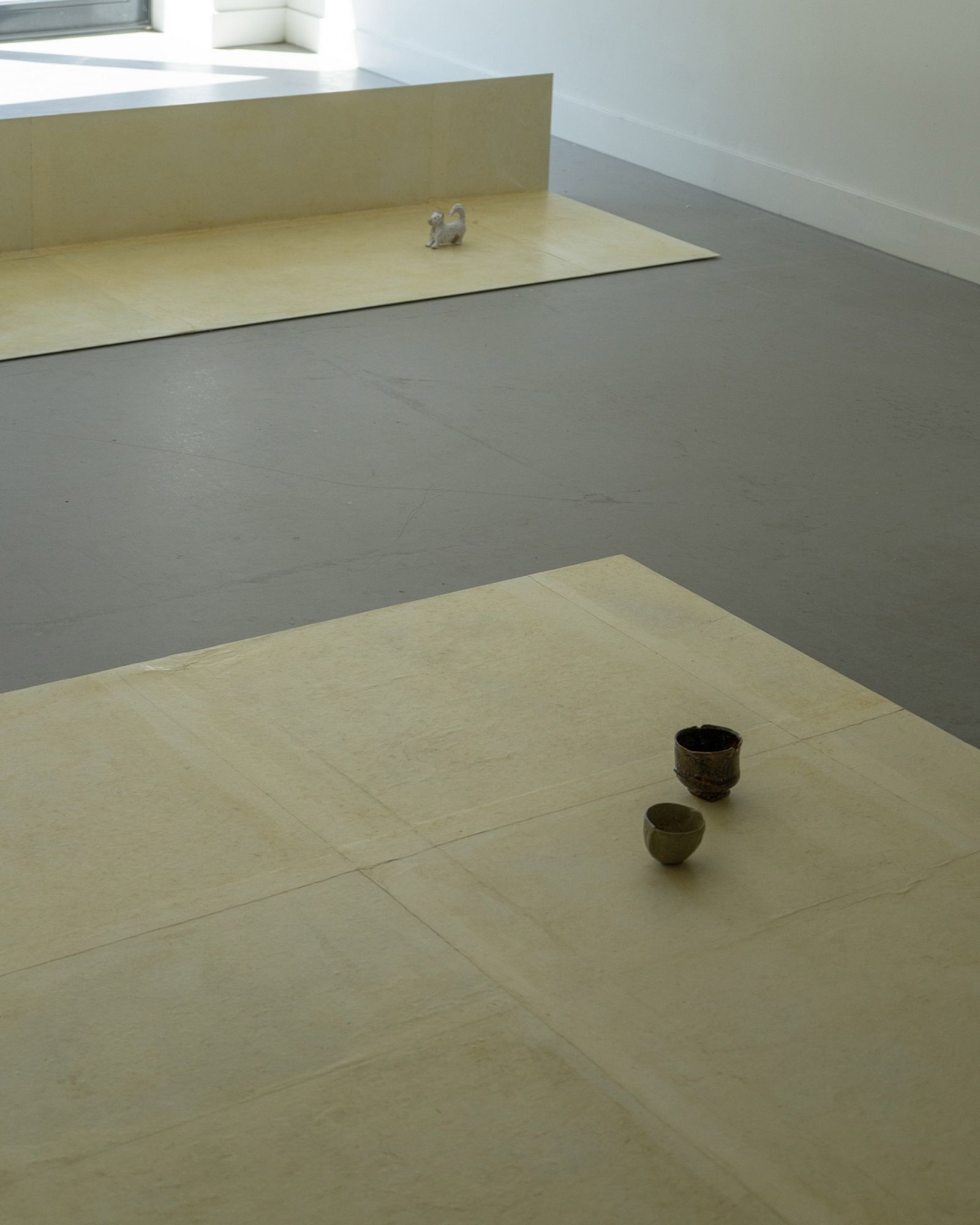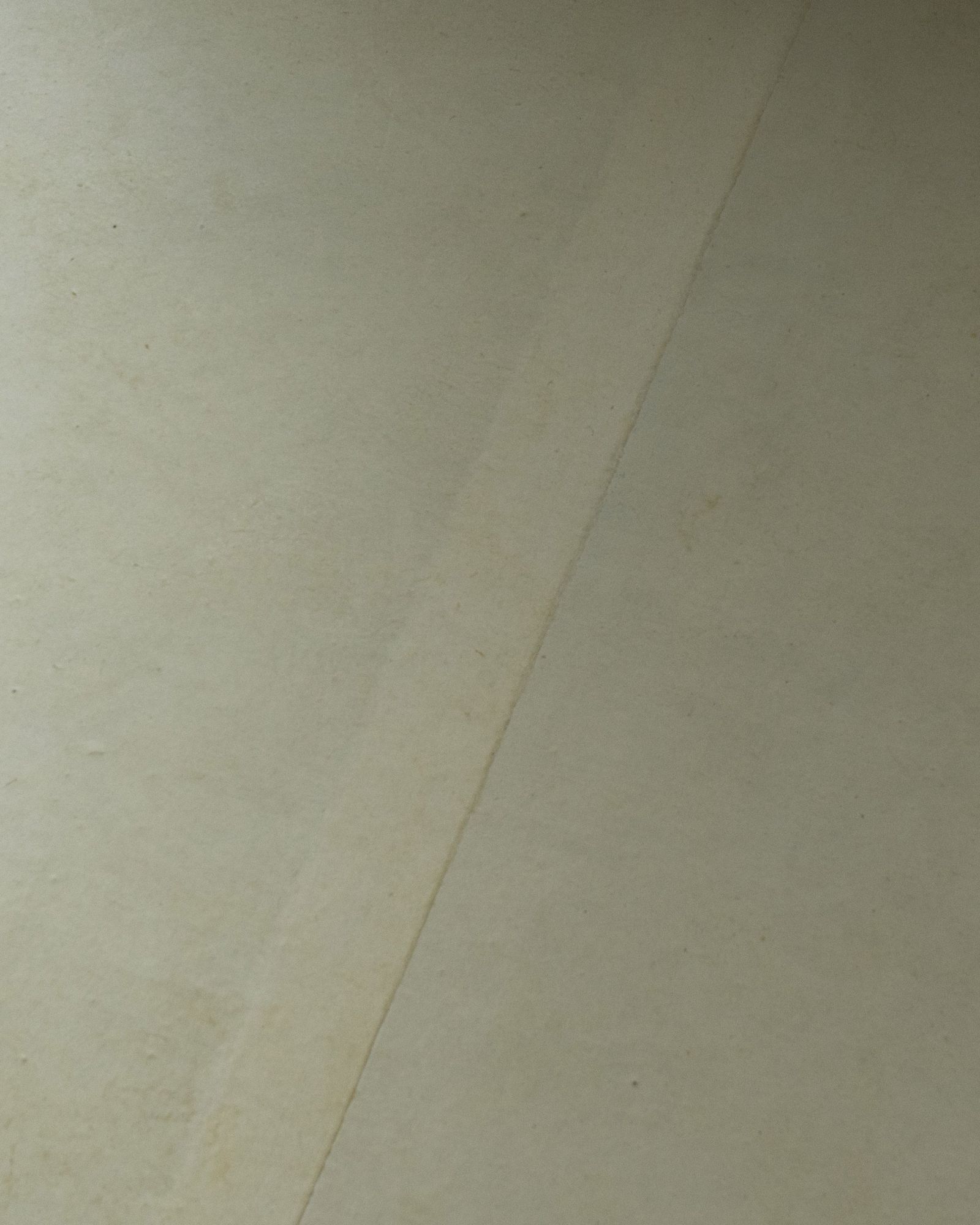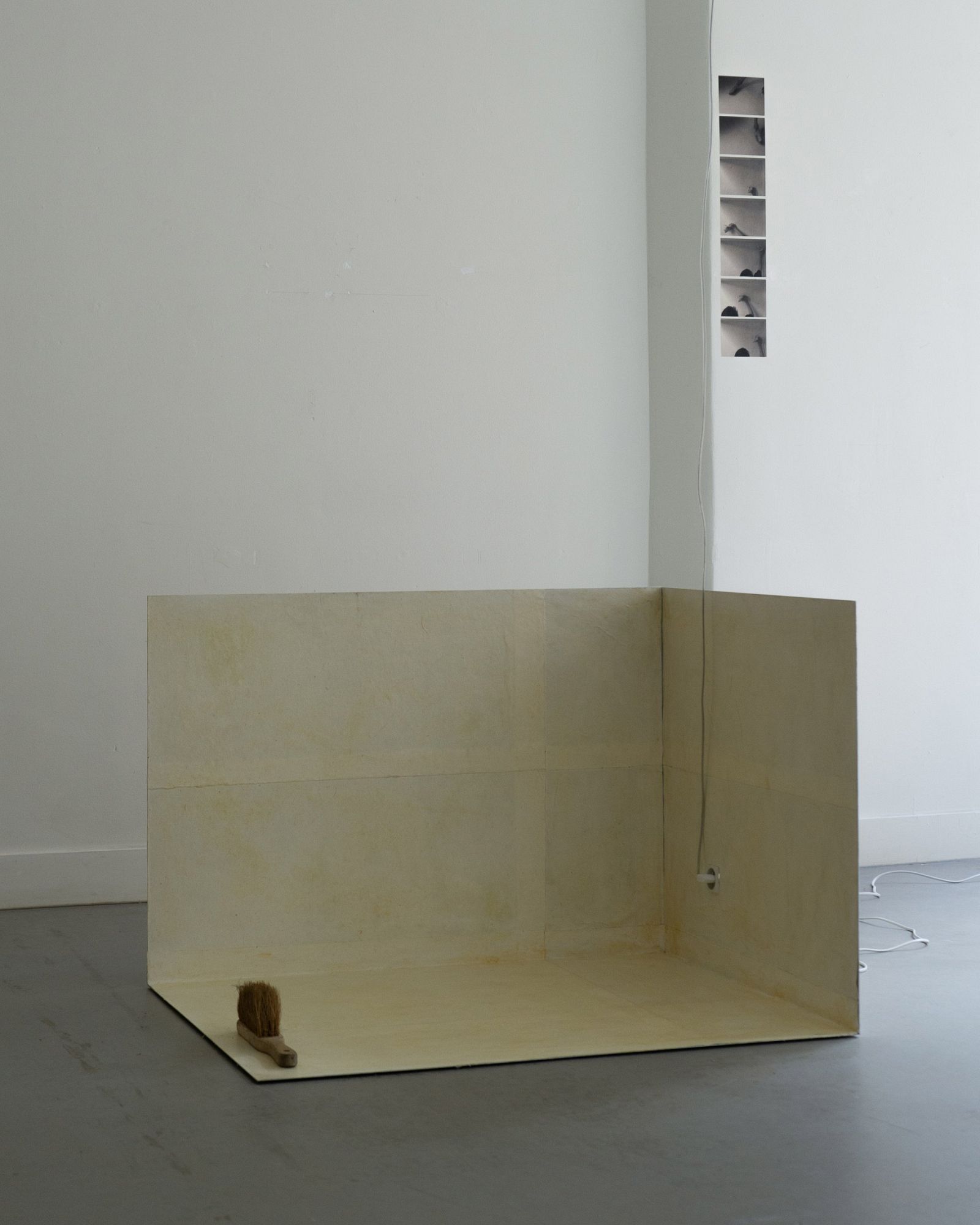
Sculptural floor fragments reorient architectural attention toward the floor, evoking a lost sense of home rooted in my childhood memory of a house lost to fire.
Employing Kongdam, a vanishing Korean floor-finishing method in which soybean oil is gradually worked into Hanji (mulberry paper) through repeated rubbing, the work recalls a tactile, care-driven relationship to domestic space.
Detached as fragments-corners, nooks, and floor panels-these objects intervene in the vertical, object-saturated, efficient order of Westernized modern interiors, offering a counter-gesture grounded in horizontality, emptiness, and contemplation.
Rather than idealizing tradition, the work rethinks the contemporary home through poetic material practice, rendering the floor a contemplative, relational space-one that nurtures care and quiet resistance to a life shaped by consumerism, efficiency, and productivity in Korea.

